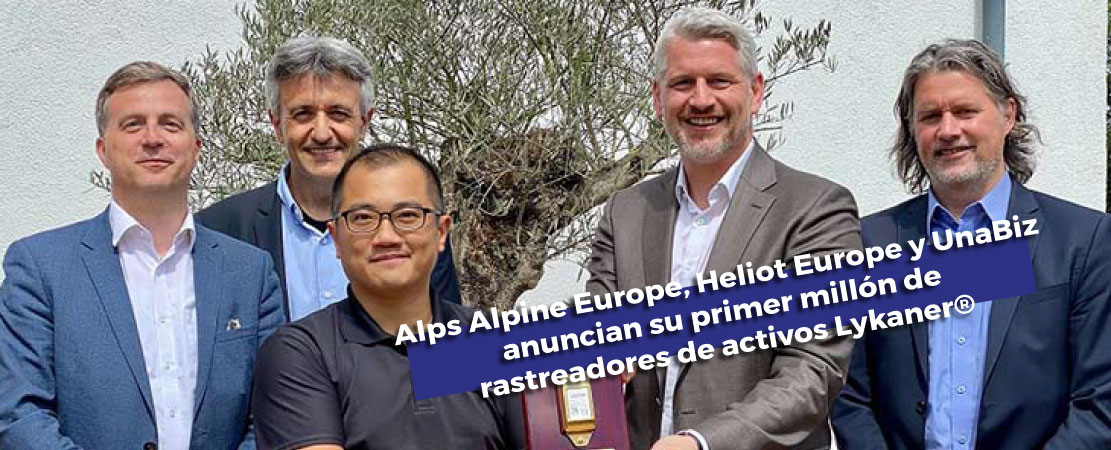Source: Enterprise IoT Insights
IoT networking company Sigfox has big plans for 2019. Every IoT company does, of course, but the French firm has set a target to secure ‘global’ coverage by setting up in China, India, and Russia, finally, and plugging three major gaps in its existing footprint.
Negotiations are ongoing, and long-winded. Its model is to select a partner in each territory to build and manage a national network, and support connections to it. It has repeat business with a few, across multiple markets; UK based WMD is perhaps the most notable, running Sigfox operations in most Latin American markets, as well as the UK.
It is unclear whether WMD, another partner on its books, or a brand new partner completely will forge ahead in China, India, and Russia. Bertrand Ramé, the company’s senior vice president of international operations, says it will evaluate partners based on their experience in network building and management, their ‘go-to-market’ activities, and their financial muscle.
The investment is considerable; Sigfox estimates operators will make money back in four years, typically. But it has a recipe book for success, it says – a pipeline of well-worked use cases for Sigfox operators to focus on, as they plot their returns. There are two priorities, in terms of technology and market applications.
“One is anything related to asset tracking and asset monitoring, which you find in the supply chain and logistics industry, but also in agriculture and mining, and what have you. Asset tracking is everywhere, and a lot of our successes are in this field,” says Ramé.
The second is referred to within Sigfox circles as ‘0G’, or Zero-G, describing generally the application of Sigfox as a benchmark technology in the backup network – as a foundation for 3G and 4G, and all the other technology-Gs going into a somewhat rangey and nebulous future 5G ecosystem.
The point is Sigfox-style low-power wide-area (LPWA) networking complements standard cellular, in its various guises, and parallel LPWA equivalents, reckons Ramé. “Sigfox does not necessarily constitute a competing tech to NB-IoT and LTE-M, and 3G and 4G and everything else, but a complement in a lot of cases. It is a perfect network for that.”
He produces three examples of go-to LPWA applications, with alarm systems, travel bags, and freight cargo. They are straight out of the Sigfox recipe book; the first illustrates the so-called 0G concept, and the others add tracking to the mix.
The company is working as a fall-back protocol for Securitas Direct alarms in Europe, in case their default ADSL and 3G connections are compromised by burglars, explains Ramé. “You can buy $20 jammers on the internet,” he says. “Securitas has added Sigfox as a third backup.”
It has also joined with French fashion brand Louis Vuitton and French tyre company Michelin on a pair of tracking solutions.
The first of these is for a bag tracker, compatible with Louis Vuitton’s Horizon range, which allows passengers to track luggage through airports, even while travelling between different countries. The second, with Michelin, is for tracking freight cargo in and out of sea ports, and to warehouses for onward distribution.
In all of these cases, Sigfox distinguishes itself as a LPWA solution because, well, it connects your ‘things’ at lower power and at lower cost, says Ramé, and makes viable the kinds of amoeba-like IoT organisms that licensed cellular LPWA technologies simply cannot justify.
“Batteries last months and years, not days and weeks – and the cost of the device and connectivity will always be higher with traditional cellular.”
Plus, Sigfox offers a simpler way for connected ‘things’ to be tracked as they make their way across the planet – in a most markets, anyway, and in China, India and Russia in due course, if the company’s 2019 strategy pays off. “Whether we conclude those discussions in 2019, I can’t promise today, but it is highly likely,” he remarks.
The point is the technology is the same and the radio band is the same, even if the frequency within it varies some. “Ours is one network, not a patchwork of hundreds of networks – there is no roaming agreement between countries,” he says.
It appears to be working. A recent report by IoT research firm ON World found unlicensed networks, mostly based on Sigfox and LoRa, make up two-thirds of LPWA networks today; a third of the total network deployments are geared towards smart city applications, the report found.
Importantly, considering the tendency to pair it with LoRa-based solutions, Sigfox networks are constructed and managed as publicly available services. LoRaWAN is operated as a private network, which requires users to buy, install and manage their own equipment.
That is the Sigfox distinction, anyway. It might be noted, as an aside, the LoRa Alliance counts deals with over 100 public network operators, including Orange, Comcast, KPN and Swisscom.
“If you have building, and 100,000s of devices, then it might make sense to install a base station. But if you don’t want to invest that time and money – and for most businesses, network operations are not a core part of their skills – and the project also requires regional, national, or international coverage, then our technology is probably the right option.”
These recipe cards will be brandished in negotiations in China, India, and Russia, and in the field after tpartnership deals have been signed in these markets. But more immediately, they inform Sigfox’s deployments and application in the United States, where it has so far struggled to find its mark.
For all the headline focus around its target launches, expansion across 50 US states is the mother of its 2019 tasks. “The US is a critical market for Sigfox,” explains Ramé.
“Sigfox has to succeed in the US to succeed globally, and it has to succeed globally to succeed in the US. But it’s a large country – it’s like 50 individual countries, each with different rules and regulations.”



